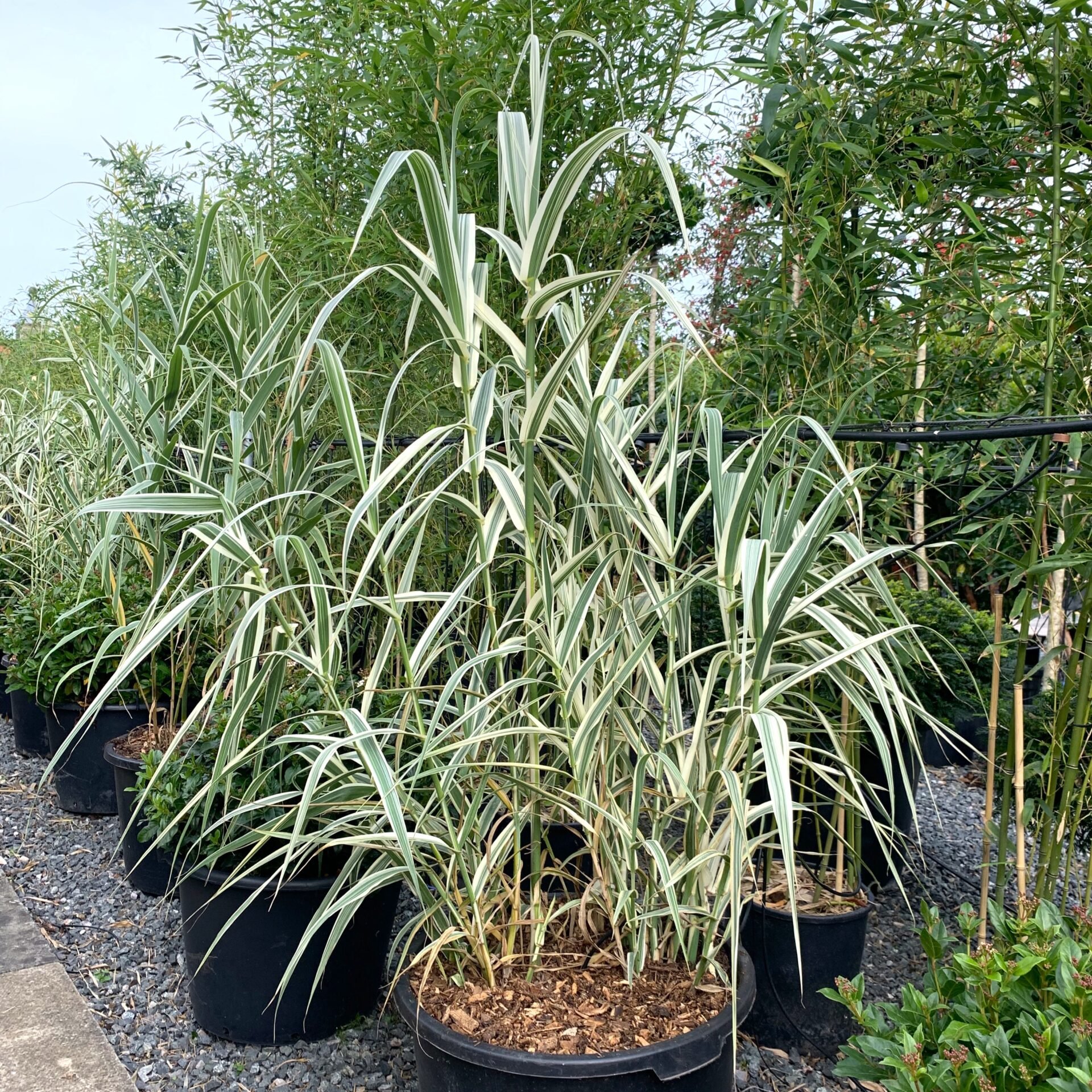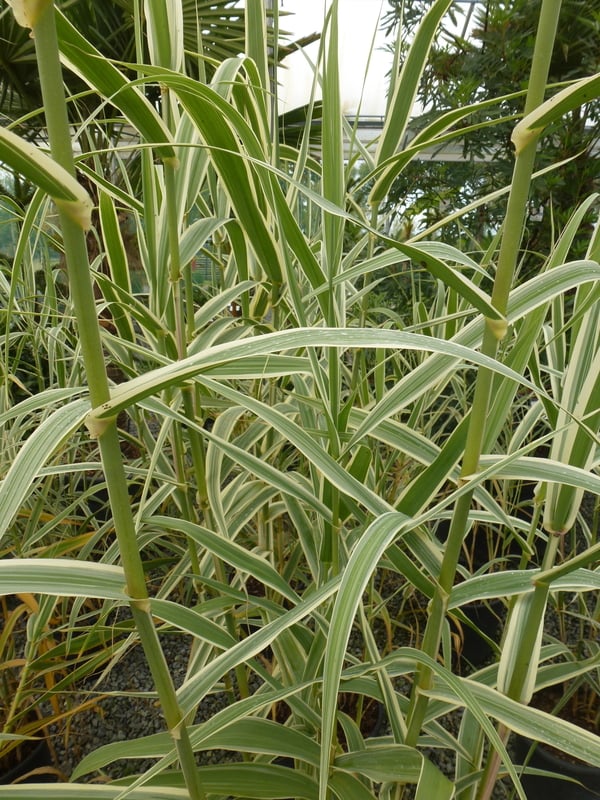Arundo donax variegata (Variegated Spanish Reed)
The variegated sugar cane lookalike seen in wet places throughout the Mediterranean. Dies down in winter. Dramatic yet well behaved. Grows to 10ft. Exotic. Please contact us for stock availability and sizes.

Hardiness level Amber
Below, the content is cut and pasted from the account of the non variegated form (Arundo donax). The only difference with this variegated one is it might sometimes need a bit of extra nitrogen (Blood, Fish and Bone, Miracle-gro etc) to maintain good variegation and that it's less vigorous and is unlikely to get much over 8ft. It's also much more eye catching. A great thing for your exotic bits.
Exotic grass that grows to approx 12ft tall. Unlike bamboo (closely related), it's not evergreen and by Christmas the canes still stand but the leaves will have gone brown and hang from the canes.
We have various suggestions as to what to do with it in the winter: 1. Leave it alone - it looks seasonal. 2. Cut the whole thing down so there's nothing to see until the new shoots emerge in the spring. 3. In November or December, remove all the brown leaves, leaving the canes standing on their own. Most people seem to agree that the clump of bare canes is attractive in the winter. During the following spring, new canes will emerge from the ground but a certain amount of regeneration will come from the nodes on the old canes. The leaves on the new canes are much wider and bluer than the regenerated leaves from last year's canes and to leave both for the summer doesn't look particularly good - like two completely different plants growing in the same place. We find the answer is to cut down the old canes as the new ones are emerging. This allows something of interest throughout the year. In the Mediterranean, you can often spot this growing wherever there is dampness (ditches, by rivers etc) and its plumes of white flowers wave around above the foliage. In Britain, I've never known it to flower and it doesn't spread but it will get just as tall as in warmer climates and looks just as good.
Spanish Reed is widely used in Spain for ceilings in both houses and barns. In case you're interested, the process for preparation is as follows: 1. Cut in January when there is no sap rising. 2. Bundle and dry, standing vertically (feet down). 3. Peel the canes the day they are going to be used. In England the drying would need to be done in a barn. The canes are laid over the joists and tied with hemp (or some natural or natural-looking fibre) from above. This is very painful on the knees. The convention seems to be for the canes to be varnished in houses and white-washed in farm buildings. It looks dead ethnic anyway - which ever way you do it.
Like all grasses, this needs plenty of moisture in the summer and plenty of light. In good conditions, you can expect new shoots to reach at least 12ft by August. Good in coastal positions as it can take plenty of ventilation (wind).
Propagated by division (or splitting)
Additional Information |
|
|---|---|
| Soil Type | Clay, Dry / Well Drained, Sandy, Shingle / Beach, Soggy /Damp (Plant high and you can get away with murder) |
| Light | |
| Plant Type | |
| Continent of Origin | |
| Specialist Plants | |
| Situation | Coastal, Exposed (To wind and sun), Mild City Gardens, Sheltered Garden |
| Hardiness | |





















